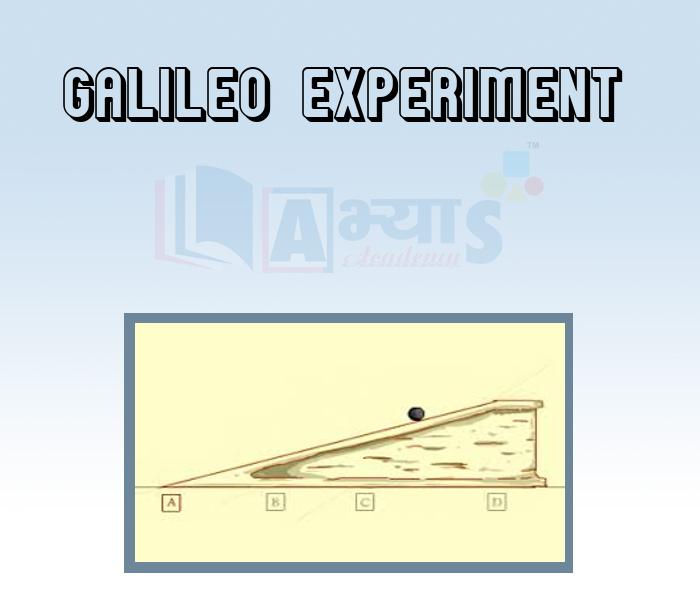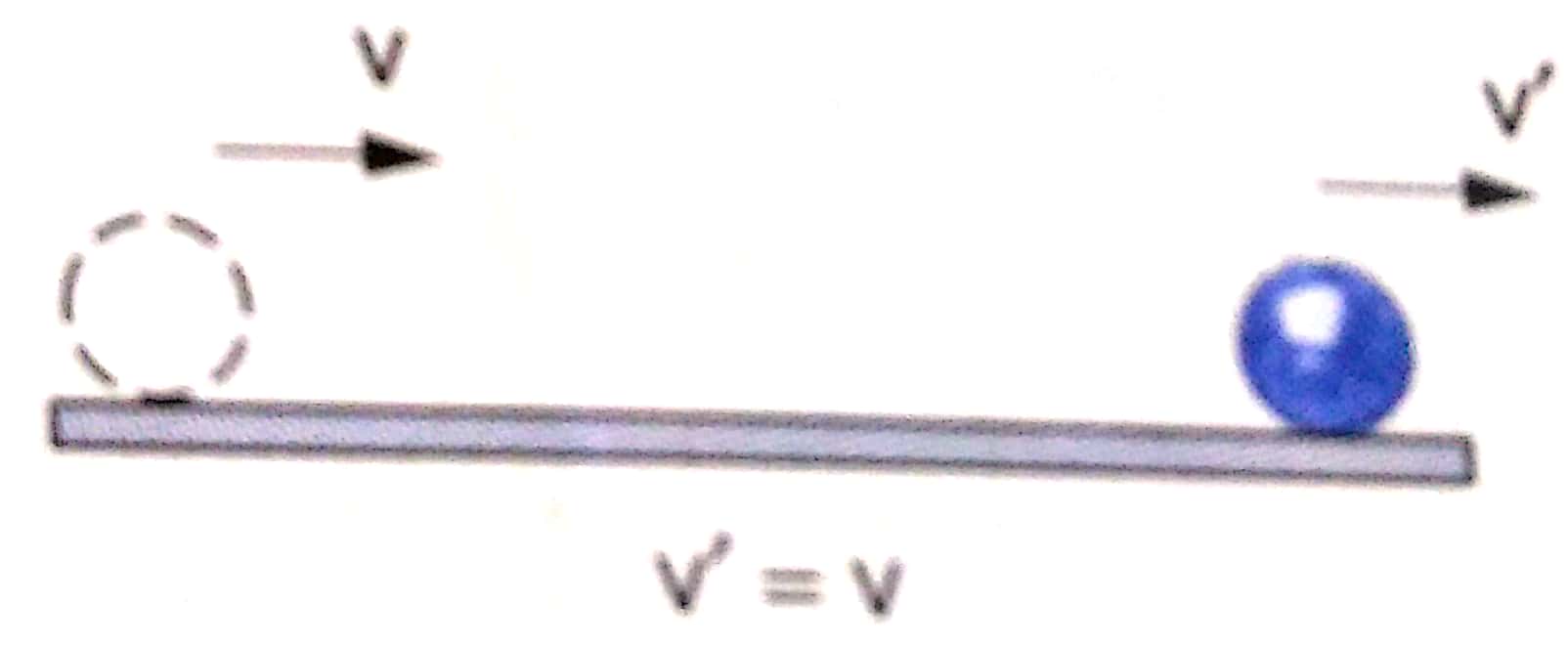Galileo Experiment







Galileo’s Experiment
In the 16th Century AD, Galileo Galilei performed a very interesting experiment. He considered a ball moving on a horizontal very smooth surface with some speed. He observed that the ball slows down after some time as an unbalanced frictional force exerted by the table opposes the motion of the ball.

Conclusion: He concluded that an object body moves with uniform velocity when no external force is applied.
Another experiment of Galileo leading to the same conclusion involves a double inclined plane. He observed the motion of balls rolling on an inclined plane. When a ball rolls down an inclined plane, its speed increases, whereas while rolling up an inclined plane, the speed decreases.
Which of the following are correct ? (a) Galileo observed that when a ball rolls down an inclined plane, its speed increases. (b) Galileo observed that when a ball rolls up an inclined plane, the speed decreases. (c) Galileo observed that a ball moves with uniform velocity when no external force is applied. | |||
| Right Option : D | |||
| View Explanation | |||
Which of the following work is not done by Galileo Galilei ? | |||
| Right Option : C | |||
| View Explanation | |||
The tendency of the body to continue in its state of motion even when some unbalanced force is applied on it is called as ______________ | |||
| Right Option : B | |||
| View Explanation | |||
Students / Parents Reviews [10]
My experience was very good with Abhyas academy. I am studying here from 6th class and I am satisfied by its results in my life. I improved a lot here ahead of school syllabus.

Ayan Ghosh
8thI have spent a wonderful time in Abhyas academy. It has made my reasoning more apt, English more stronger and Maths an interesting subject for me. It has given me a habbit of self studying

Yatharthi Sharma
10thAbout Abhyas metholodology the teachers are very nice and hardworking toward students.The Centre Head Mrs Anu Sethi is also a brilliant teacher.Abhyas has taught me how to overcome problems and has always taken my doubts and suppoeted me.

Shreya Shrivastava
8thA marvelous experience with Abhyas. I am glad to share that my ward has achieved more than enough at the Ambala ABHYAS centre. Years have passed on and more and more he has gained. May the centre flourish and develop day by day by the grace of God.

Archit Segal
7thMy experience with Abhyas is very good. I have learnt many things here like vedic maths and reasoning also. Teachers here first take our doubts and then there are assignments to verify our weak points.

Shivam Rana
7thAbhyas Methodology is very good. It is based on according to student and each child manages accordingly to its properly. Methodology has improved the abilities of students to shine them in future.

Manish Kumar
10thOne of the best institutes to develope a child interest in studies.Provides SST and English knowledge also unlike other institutes. Teachers are co operative and friendly online tests andPPT develope practical knowledge also.

Aman Kumar Shrivastava
10thMy experience with Abhyas academy is very good. I did not think that my every subject coming here will be so strong. The main thing is that the online tests had made me learn here more things.

Hiya Gupta
8thBeing a parent, I saw my daughter improvement in her studies by seeing a good result in all day to day compititive exam TMO, NSO, IEO etc and as well as studies. I have got a fruitful result from my daughter.

Prisha Gupta
8thIt was a good experience with Abhyas Academy. I even faced problems in starting but slowly and steadily overcomed. Especially reasoning classes helped me a lot.
